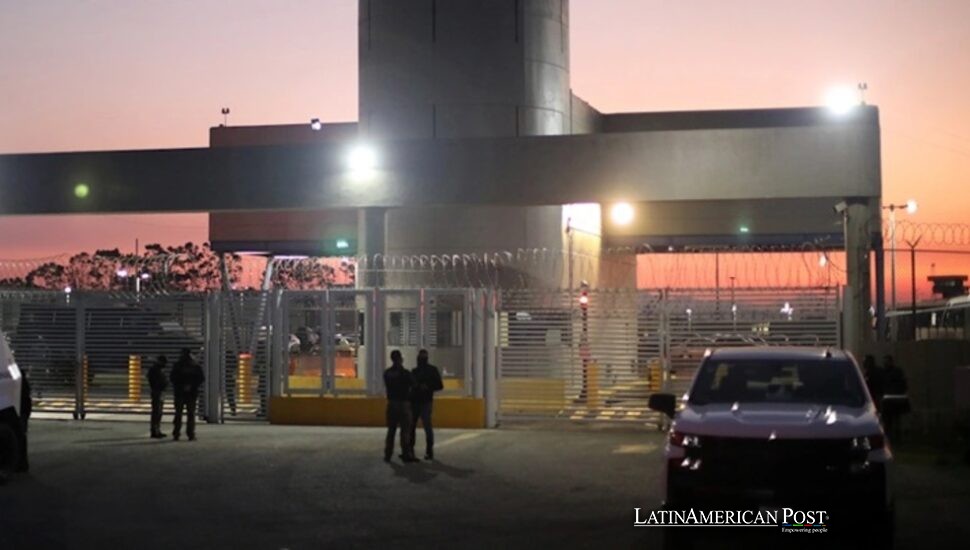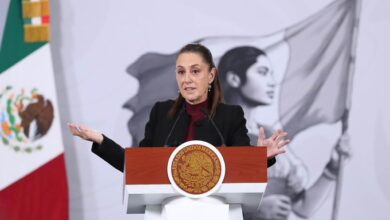Mexico’s High-Profile Extraditions Keep U.S. Partnership Alive Amid Cartel Pressure

On a secure runway in Mexico, 26 alleged cartel operatives boarded a U.S.-bound flight—a calculated display of cooperation that masks the political strain underneath. In the shadows of trade threats and fentanyl’s toll, both governments are testing how far this arrangement can go.
A Flight With More Than One Destination
The latest extradition moved two dozen-plus inmates that Mexican officials described as a “permanent risk to public security,” part of a strategy to move sensitive prosecutions out of domestic courts and into U.S. jurisdictions. American authorities called them “key operatives” tied to the Jalisco New Generation Cartel (CJNG) and the Sinaloa Cartel. The charges span organized crime, trafficking, and violent offenses.
Among them: Roberto Salazar, accused in California of murdering a Los Angeles County sheriff’s deputy, and Abigael González Valencia, alias El Cuini, described as a financial mastermind for CJNG and brother-in-law to cartel leader Nemesio “El Mencho” Oseguera. Mexico’s Justice Ministry reaffirmed a long-standing condition—no extradited defendant can face the death penalty—a rule that shapes every case, no matter the politics in play.
The handoff follows February’s massive transfer of 29 prisoners, one of the largest in years. The latest names may be less infamous, but the stakes are no smaller. Each defendant now becomes part of a cross-border test: can U.S. courtrooms deliver the kind of convictions and sentences that disrupt cartel operations back home?
Politics at the Edge of the Runway
The flights unfolded against a tense political backdrop. Washington has pressed Mexico to ramp up its anti-trafficking measures, hinting at tariffs as a stick if progress stalls. Mexico has answered with a mix of pushback and proof—rejecting outright the idea of unilateral U.S. operations on its soil, while publicly showcasing high-profile extraditions as evidence of partnership.
President Claudia Sheinbaum drew a rigid boundary in her public remarks last week: “The United States is not going to come to Mexico with the military. We cooperate and collaborate, but there is no intention of invading. That is ruled out, absolutely ruled out.”
Extraditions fit comfortably inside those lines. They’re legally codified, mutually negotiated, and politically presentable on both sides. Should tariff threats resurface, Mexico can point to the record: two large-scale transfers in under a year, high-value suspects included. For the U.S., the optics are equally valid—an image of suspects in custody, bound for federal prosecutions that carry long sentences and, they hope, deterrent value.
Fentanyl’s Shadow Over the Cooperation
Driving much of the urgency is fentanyl. The synthetic opioid, often cut into counterfeit pills or mixed with other drugs, has fueled a deadly overdose crisis in the United States. American officials argue that to choke the supply, they need to dismantle the networks at every stage—from financiers to transporters to retail-level distributors.
Mexico has stepped up lab seizures, closed down processing sites, and focused its extradition priorities on suspects tied to U.S. victims or to the logistics of moving fentanyl north. The two recent mass transfers reflect that focus: February’s batch included old names with deep symbolism, like Rafael Caro Quintero, accused of the 1985 killing of DEA agent Enrique “Kiki” Camarena; the newest cohort leans toward those embedded in today’s fentanyl supply chain.
One of the extradited women, identified as Rosa A., is accused of moving drugs across the border in 2016 and 2017. While her case predates fentanyl’s current prominence, it’s the type of cross-border trafficking file that both sides want to handle in U.S. courts.
Cooperation’s Boundaries and Its Balancing Act
For Mexico and the U.S., extradition is the cleanest intersection of politics and law: it requires judicial approval, respects Mexico’s ban on the death penalty, and allows complex prosecutions to proceed where resources are greater. But the flights are not a cure-all.
Cartels adapt quickly. The financial channels, corrupt intermediaries, and steady stream of recruits that sustain them don’t vanish when a plane takes off. And the sovereignty debate never disappears. Mexico’s leadership has been explicit about what is off-limits—no foreign soldiers, no unilateral raids, no expanding missions under the guise of cooperation.
That makes extradition a pressure valve. It allows Mexico to demonstrate action without crossing its red lines and provides Washington with a visible scorecard when critics demand proof of progress. But it’s a balancing act: too many high-profile handovers risk stirring nationalist resentment in Mexico; too few risk reigniting trade threats or political confrontation from the U.S. side.
The pattern is likely to continue: more cases winding through Mexican courts, more defendants vetted against the death penalty, more secure flights heading north. The larger questions—whether this cooperation can slow fentanyl’s spread or curb cartel power—remain unanswered. For now, both governments seem willing to keep testing the runway.
Also Read: Trump’s Hardline Shift Toward Latin America Rekindles Old Fears and New Risks
What’s clear is that each extradition is more than a legal transfer. It’s a diplomatic signal, a political calculation, and a bet that courtroom wins can ripple back to the streets where the drug war’s toll is counted in lives. The pressure isn’t easing, and neither is the need to show that these handoffs amount to more than theater.




